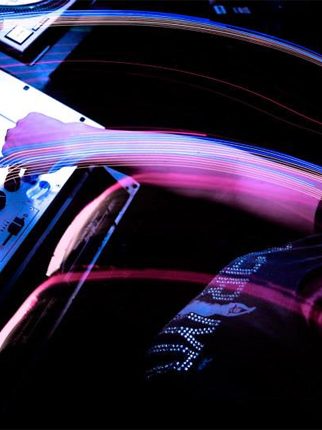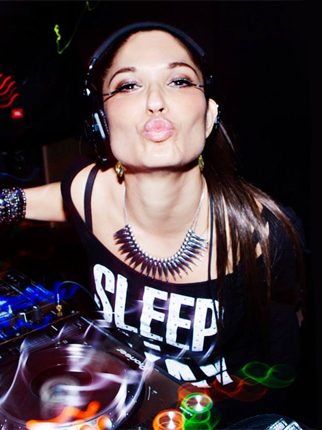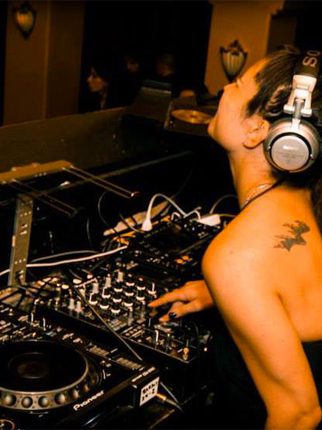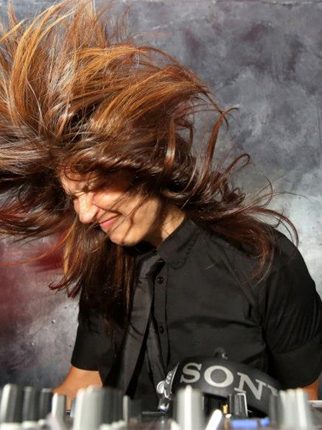So You Wanna Be a DJ #8: The Art of Mixing
Welcome to the ongoing series So You Wanna Be a DJ by Charissa Saverio (aka DJ Rap). If you’re joining us for the first time, you can read previous articles in the series here.

I really hope the info I have shared with you has helped—if even a little. It’s kind of hard to talk about how to actually DJ, as this is a personal thing and different for everybody. A very long time ago (1986), I heard a Jamaican DJ called Marvelous Marvin. This was before I even began my career. What blew me away with this guy was the fact that he was creating art as I watched him blend two records effortlessly together—creating, in fact, a remix before my eyes. Not only that, but all his mixes were in tune with each other! I even remember the tracks: the Soul 2 Soul a cappella mixed in Din Da Da. It was simply beautiful.
To this day, I have never seen another DJ do that, ever. Sure, you can do it with equipment; any idiot can now. I made a promise to myself that my mixes would be beautiful (well, I would certainly try), and that is why I simply spend hours and hours practicing my sets. It really helps to know your tunes—where the breaks occur, where the track goes, etc. For the DJs like me who can play six-hour house sets or longer, this is important, as there is a lot of music to get through and you want your set to flow—to use a cliché—as a journey. This is a different case in drum & bass, however, mainly because we play for only one hour and your mission, should you choose to accept it, is to destroy the dancefloor. Still, I practice and practice and practice hard!
Another reason to practice is because I spend endless hours editing other people’s music. I do this so I have something that is special, something that is mine alone. It could also be that I need a simpler ending to a track and the person who made it was not a DJ, so they put a bassline in it all the way to the end, thus making it tricky for me to get the next track mixed in tune. Again, this is a personal thing; some DJs that I know use EQs to fade bottom-end out. It is up to you, but I like my tracks to start with beats and end only with beats, because I never pre-shape my sets. I play using instinct, never knowing what record is coming next. This makes my job much easier, so it makes sense for me to spend the time doing this to all my music so I never have to worry about anything not flowing or coming in out of tune. I also never get bored, because every set is different.
Of course, I am at a point now where the majority of what I play is from my labels and my own production and other really great artists; I don’t play badly made tunes. But practice makes perfect in my case, too. Try to stay away from a formatted set list. You are always better when you use your heart and eyes to tell you what track to drop next. The crowd will tell you; you’ll just feel it. Sometimes it’s cool to have your music arranged in a specific way (in your box/bag, whatever… personally, I love UDG for those that play vinyl). For example, prog house in one set, minimal in one set, and so forth. I arrange my bag according to time: beginning of show, middle, peak-time and end. As I said, it’s all up to you.
Well, my dears, that’s all for mixing. Just take the time in your bedroom before you go out there. There’s nothing worse that a newbie sledging mixes; it’s so awful to watch. Become great before you expose yourself to the masses, because it takes only one person who thinks you suck to tell a hundred people—especially with Instagram, Facebook, Twitter, Blogger and the internet being what it is; word gets around. And if you don’t want to be the best you can possibly be, then why even try?
Luv and bass…
After designing curricula for schools like Icon Collective, then teaching at Dubspot, DJ Rap launched her very own school, Music Tech Collective, on October 12.
Follow DJ Rap on Facebook | Twitter | SoundCloud





